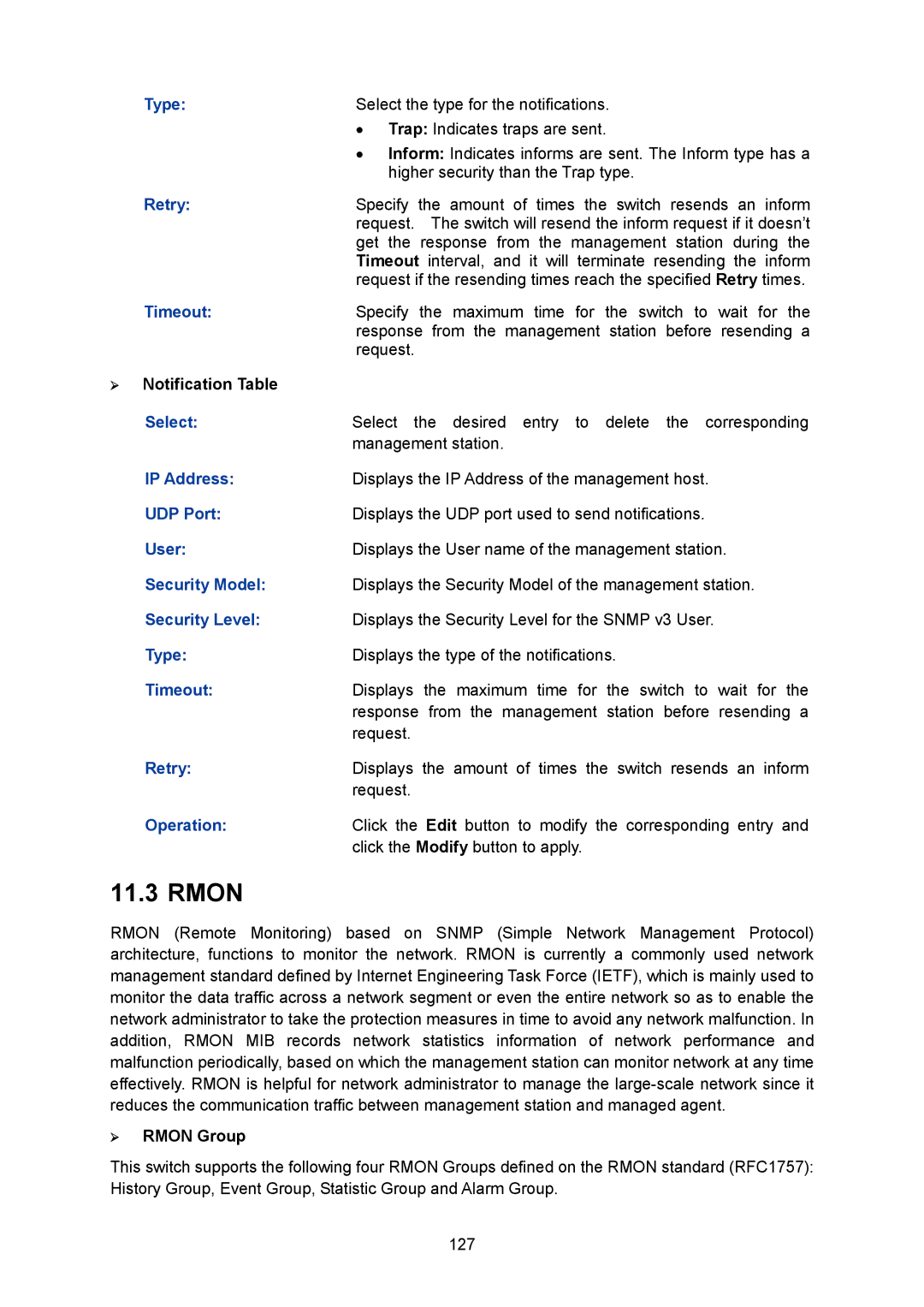Type: | Select the type for the notifications. |
| • Trap: Indicates traps are sent. |
| • Inform: Indicates informs are sent. The Inform type has a |
| higher security than the Trap type. |
Retry: | Specify the amount of times the switch resends an inform |
| request. The switch will resend the inform request if it doesn’t |
| get the response from the management station during the |
| Timeout interval, and it will terminate resending the inform |
| request if the resending times reach the specified Retry times. |
Timeout: | Specify the maximum time for the switch to wait for the |
| response from the management station before resending a |
| request. |
¾Notification Table
Select: | Select the desired entry to delete the corresponding |
| management station. |
IP Address: | Displays the IP Address of the management host. |
UDP Port: | Displays the UDP port used to send notifications. |
User: | Displays the User name of the management station. |
Security Model: | Displays the Security Model of the management station. |
Security Level: | Displays the Security Level for the SNMP v3 User. |
Type: | Displays the type of the notifications. |
Timeout: | Displays the maximum time for the switch to wait for the |
| response from the management station before resending a |
| request. |
Retry: | Displays the amount of times the switch resends an inform |
| request. |
Operation: | Click the Edit button to modify the corresponding entry and |
| click the Modify button to apply. |
11.3 RMON
RMON (Remote Monitoring) based on SNMP (Simple Network Management Protocol) architecture, functions to monitor the network. RMON is currently a commonly used network management standard defined by Internet Engineering Task Force (IETF), which is mainly used to monitor the data traffic across a network segment or even the entire network so as to enable the network administrator to take the protection measures in time to avoid any network malfunction. In addition, RMON MIB records network statistics information of network performance and malfunction periodically, based on which the management station can monitor network at any time effectively. RMON is helpful for network administrator to manage the
¾RMON Group
This switch supports the following four RMON Groups defined on the RMON standard (RFC1757): History Group, Event Group, Statistic Group and Alarm Group.
127
